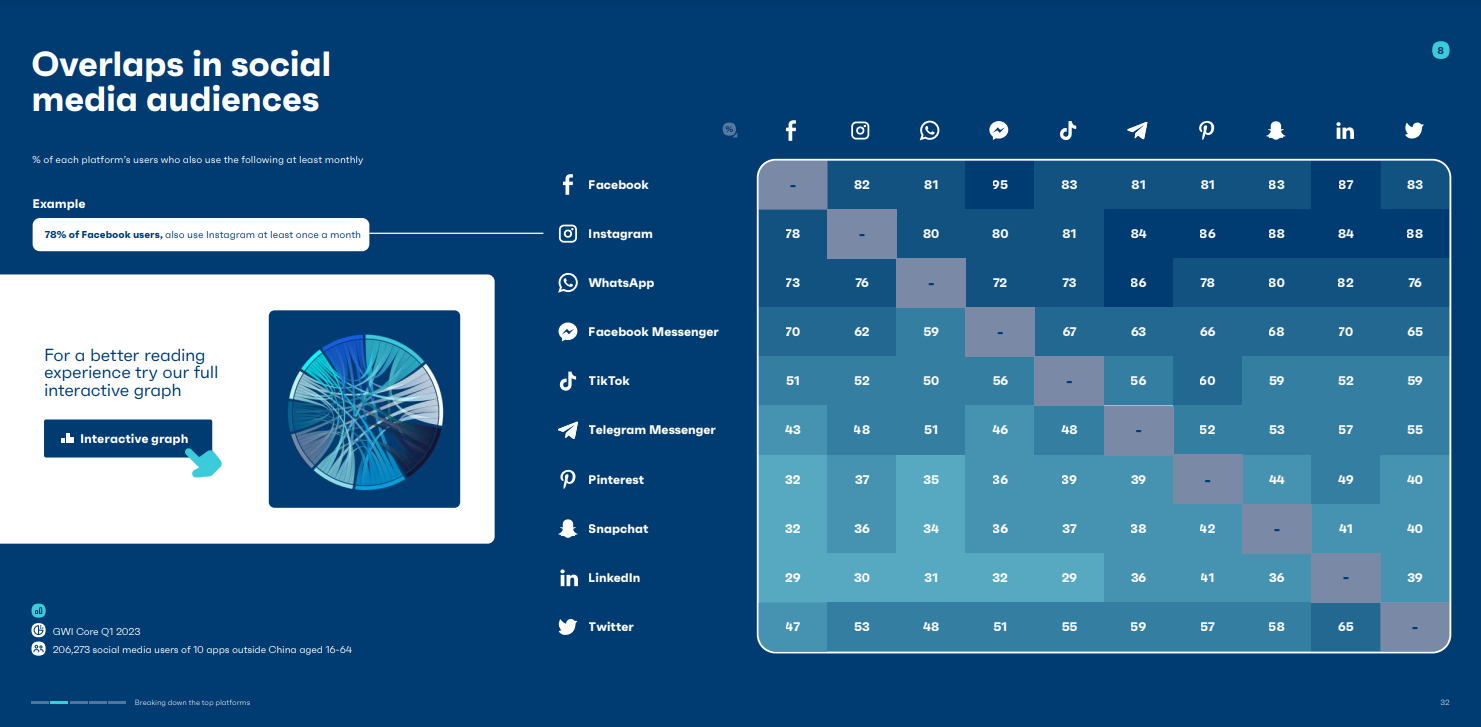The Ultimate Social Media Trends Report | GWI
Social Media |
As we delve into the intricate world of digital interactions, social media trends stand out as a pivotal reflection of societal behaviors and preferences. In recent times, we’ve witnessed a significant evolution in these trends, signaling a transformative phase in how individuals engage with digital platforms.
Time spent on social media
The duration individuals spend on social media has seemingly reached its peak. Out of 48 markets observed since Q1 2022, 36 have reported a decline in daily social media usage, marking only the second instance of a global decline since monitoring began in 2012. By Q1 2023, the average daily usage even dipped below the 2019 levels.
These trends hint at a saturation point in social media engagement. Notably, while regions like the Middle East & Africa experienced notable fluctuations, no area saw a shift exceeding 6 minutes over the last three years. A standout is North America, where usage surpassed its pandemic-induced peak.
In essence, the surge in social media activity triggered by the pandemic has tapered off. For businesses, the evolving narrative underscores a shift from mere duration to the nuances of user engagement patterns across platforms.

Breaking down the top platforms
Separating Hype from Reality:
While trending apps capture headlines, the bigger picture often lies in stable platforms. For instance, Facebook remains dominant globally, especially among younger users, despite a slight user decline since late 2020. Marketers shouldn’t hastily abandon such established platforms for newer ones solely based on hype.
WhatsApp is the World’s “Favorite”:
WhatsApp consistently ranks as a top favorite among consumers, even more so among older demographics. Its appeal spans beyond just younger audiences, offering brands a diverse platform for engagement, especially internationally.
Why Social Media Overlaps are Important:
There’s a misconception that newer platforms cater to entirely unique audiences. However, users often maintain multiple active accounts across platforms. For instance, a significant portion of BeReal users are also on Facebook.
Instead of spreading thinly across numerous platforms, brands should focus on a select few where their message resonates best. Quality engagement trumps quantity.

Differences between markets
The Table of Contents of “The Ultimate Social Media Trends Report”:
- Discover our data
- Key insights
- Time spent on social media
How has social media usage evolved? Why do different generations use social networks, and have attitudes changed over time? - Breaking down the top platforms
Which social platform is the most widely used? Which is the most well-liked? Do the top platforms have their own unique selling point? - Differences between markets
What’s distinctive about China’s social media market? Are Western markets moving in this direction? - Navigating behavioral trends
How are users consuming content on social media today? How can brands lean into behavioral trends in this space? - Sizing up social commerce
How is social media used for product discovery? Are influencers still influencing? How’s the livestream industry performing? - More from GWI
- Appendix
- Notes on methodology
Number of Pages:
- 42 pages
Pricing:
- Free
Methodology:
All figures in this report are drawn from GWI’s online research among internet users aged 16-64 or 16+. Our figures are representative of the online populations of each market, not its total population.
Note that in many markets in Latin America, the Middle East and Africa, and the Asia-Pacific region, low internet penetration rates can mean that online populations are more young, urban, affluent, and educated than the total population.
Each year, GWI interviews over 950,000 internet users aged 16-64 in 52 countries via an online questionnaire for our Core data set.
A proportion of respondents complete a shorter version of this survey via mobile; hence the sample sizes presented in the charts may differ as some will include all respondents, and others will include only respondents who completed GWI’s Core survey via PC/laptop/tablet.
When reading this report, please note that we use a mixture of data from our ongoing global quarterly research, GWI USA, GWI Work, GWI Zeitgeist, GWI Custom, and GWI Kids. GWI USA is a quarterly online study among internet users aged 16+ in the US, representing Americans across all 50 states.
GWI Work is our B2B data set that gives us a detailed view of the lives of business professionals across 18 markets. GWI Zeitgeist is a monthly recontact study of Core that we carry out in 12 markets. GWI Custom is a recontact study that we carry out in the US and UK only. And GWI Kids represents 8-15-year-old Click the Lines internet users in 18 markets.








